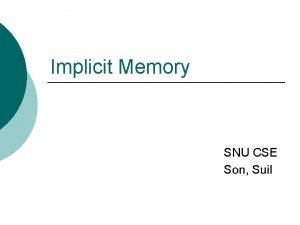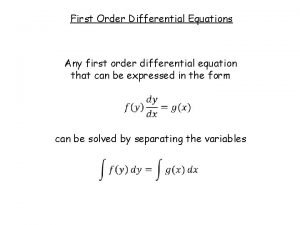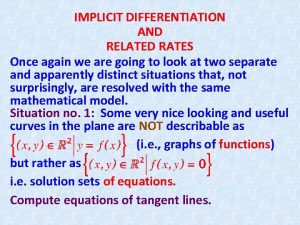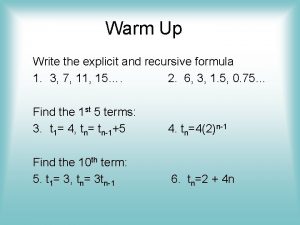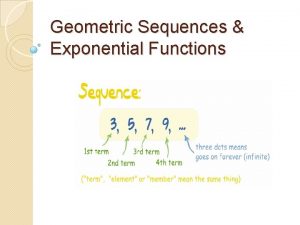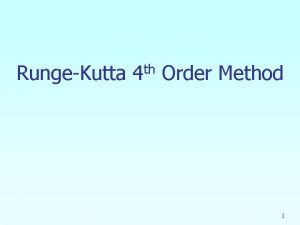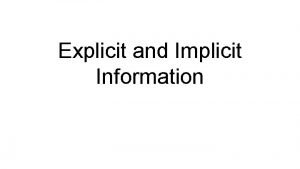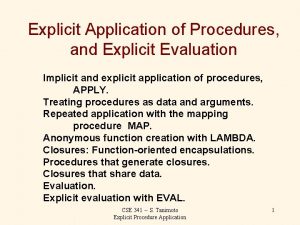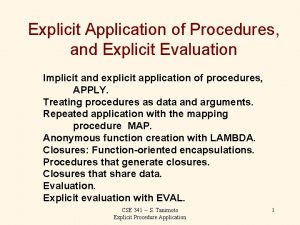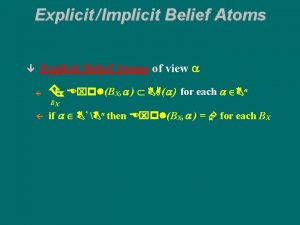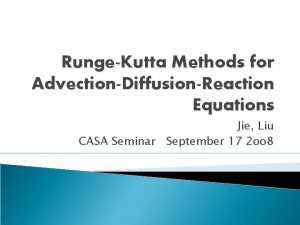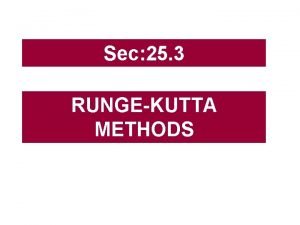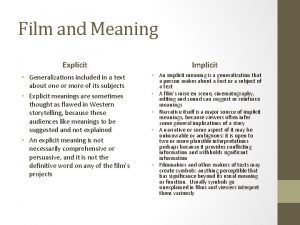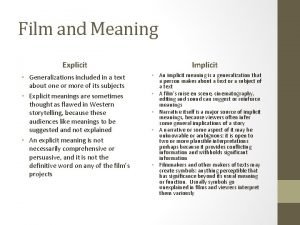Numerics of ODEs Implicit and Explicit RungeKutta methods


![Runge–Kutta methods The matrix [aij] is called the Runge–Kutta matrix, while the bi and Runge–Kutta methods The matrix [aij] is called the Runge–Kutta matrix, while the bi and](https://slidetodoc.com/presentation_image_h/207973c602684c0060b28263d84547dd/image-3.jpg)












![RKF 45 used by Maple E. Fehlberg [Computing 6 (1970), 61– 71] proposed and RKF 45 used by Maple E. Fehlberg [Computing 6 (1970), 61– 71] proposed and](https://slidetodoc.com/presentation_image_h/207973c602684c0060b28263d84547dd/image-16.jpg)














- Slides: 30

Numerics of ODEs Implicit and Explicit Runge-Kutta methods

![RungeKutta methods The matrix aij is called the RungeKutta matrix while the bi and Runge–Kutta methods The matrix [aij] is called the Runge–Kutta matrix, while the bi and](https://slidetodoc.com/presentation_image_h/207973c602684c0060b28263d84547dd/image-3.jpg)
Runge–Kutta methods The matrix [aij] is called the Runge–Kutta matrix, while the bi and ci are known as the weights and the nodes. These data are usually arranged in a mnemonic device, known as a Butcher tableau.

Gauss–Legendre method of order 4 (implicit)

Explicit Runge–Kutta methods







Classical Runge-Kutta: RK 4 = Simpson’s rule generalized



![RKF 45 used by Maple E Fehlberg Computing 6 1970 61 71 proposed and RKF 45 used by Maple E. Fehlberg [Computing 6 (1970), 61– 71] proposed and](https://slidetodoc.com/presentation_image_h/207973c602684c0060b28263d84547dd/image-16.jpg)
RKF 45 used by Maple E. Fehlberg [Computing 6 (1970), 61– 71] proposed and developed error control by using two RK methods of different orders. The difference of the computed y-values at gives an error estimate to be used for step size control. Fehlberg discovered two RK formulas that together need only six function evaluations per step. RKF has become quite popular. For instance, Maple uses it (also for systems of ODEs). Erwin Fehlberg (1969). Low-order classical Runge-Kutta formulas with step size control and their application to some heat transfer problems. NASA Technical Report 315.




Runge–Kutta–Nyström Methods (RKN Methods)



Stiff problems and implicit solutions

Euler method with h =0. 1 for a stiff ODE and exact solution






Stability of the backward Euler method for any h; Stability of the Euler method for h=0. 1, but instability for h=0. 2. Stability of RK for h=0. 2, but instability for h=0. 3. Euler method with h = 0. 18 is shown in the figure on the left. Stability for x>3 (approximately).
 Explicit vs implicit memory
Explicit vs implicit memory Explicit memory examples
Explicit memory examples Implicit memory
Implicit memory Implicit vs explicit differentiation
Implicit vs explicit differentiation Explicit costs
Explicit costs Types of sentences
Types of sentences Picture 2 what is the implied message of this ad
Picture 2 what is the implied message of this ad Implicit detail meaning
Implicit detail meaning Implicit and explicit cost
Implicit and explicit cost Pengertian fungsi implisit
Pengertian fungsi implisit Implicit vs explicit memory
Implicit vs explicit memory Implicit vs explicit memory
Implicit vs explicit memory Explicit memories
Explicit memories Implicit intent example
Implicit intent example Explicit vs implicit cost
Explicit vs implicit cost A value is a conception, explicit or implicit
A value is a conception, explicit or implicit Implicit explicit cost
Implicit explicit cost Lyric poetry sonnet examples
Lyric poetry sonnet examples Is haiku
Is haiku Rhyme in poetry
Rhyme in poetry Cowleyan ode
Cowleyan ode Odės pavyzdžiai
Odės pavyzdžiai First order ode
First order ode 1. whose fate does antigone compare to her own?
1. whose fate does antigone compare to her own? She dwells with beauty beauty that must die
She dwells with beauty beauty that must die Inlay wax pattern fabrication
Inlay wax pattern fabrication Implicit differentiation xy
Implicit differentiation xy Implicit differentiation and related rates
Implicit differentiation and related rates Difference between explicit and recursive
Difference between explicit and recursive Is a geometric sequence exponential
Is a geometric sequence exponential Explicit instruction effective and efficient teaching
Explicit instruction effective and efficient teaching










